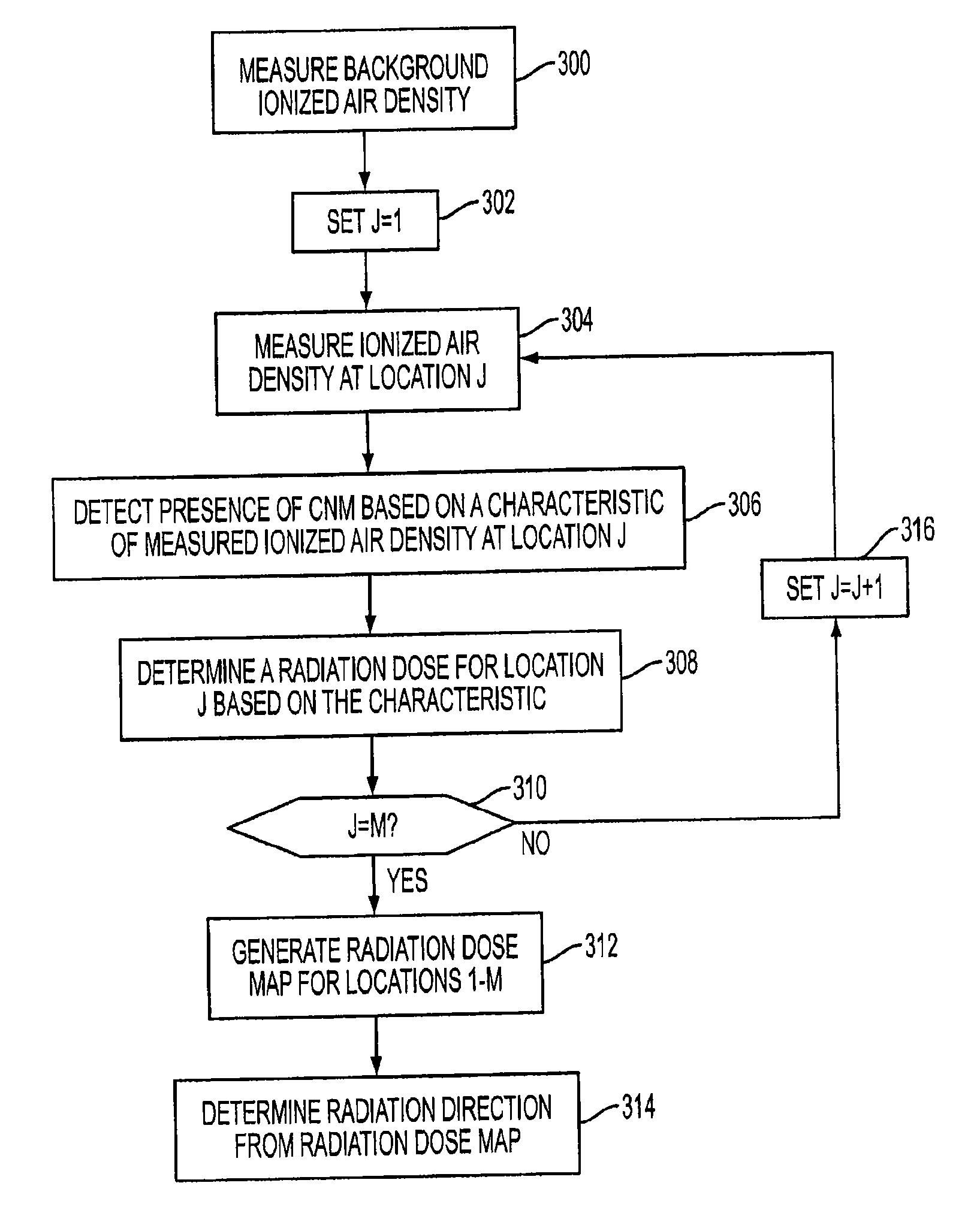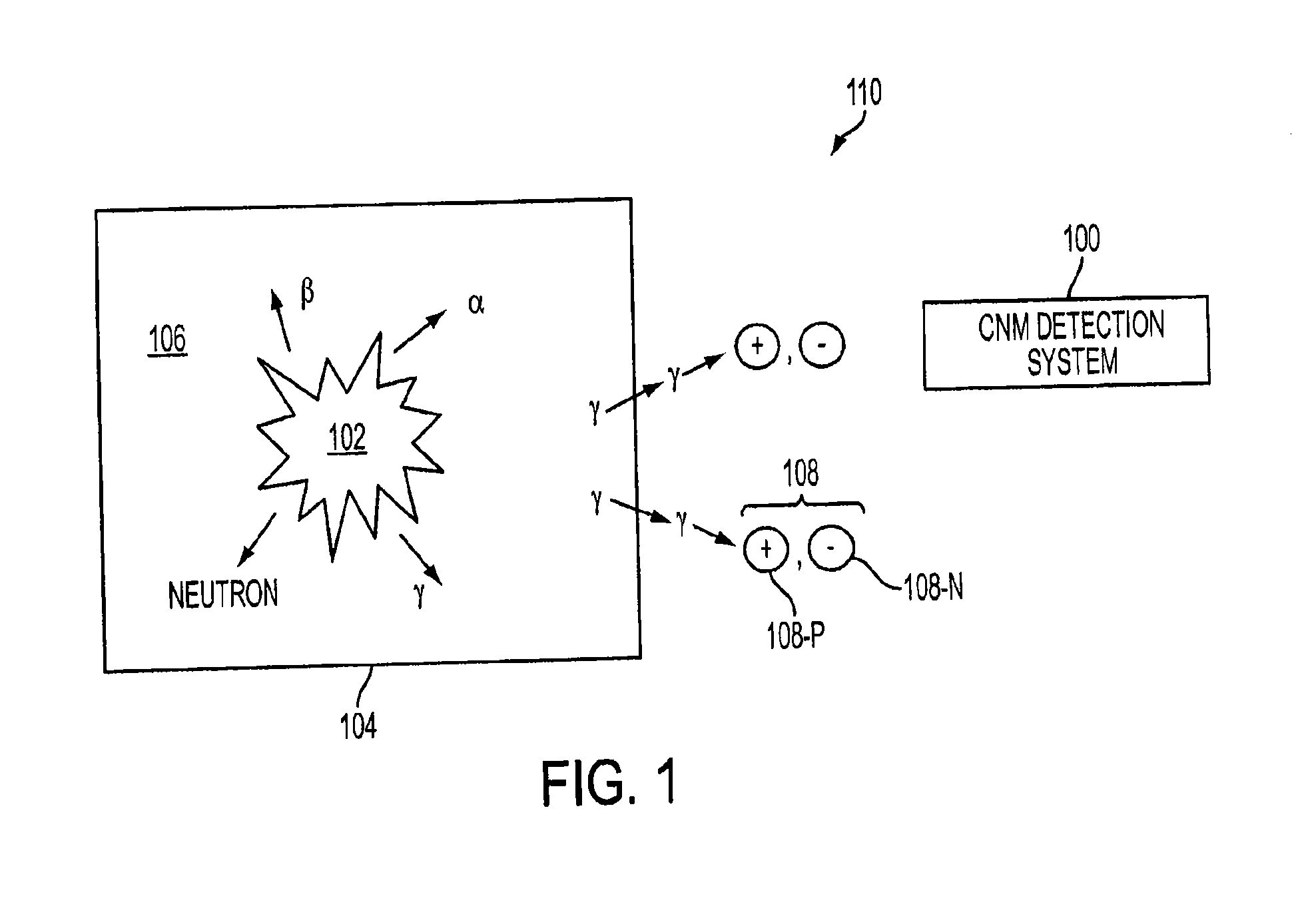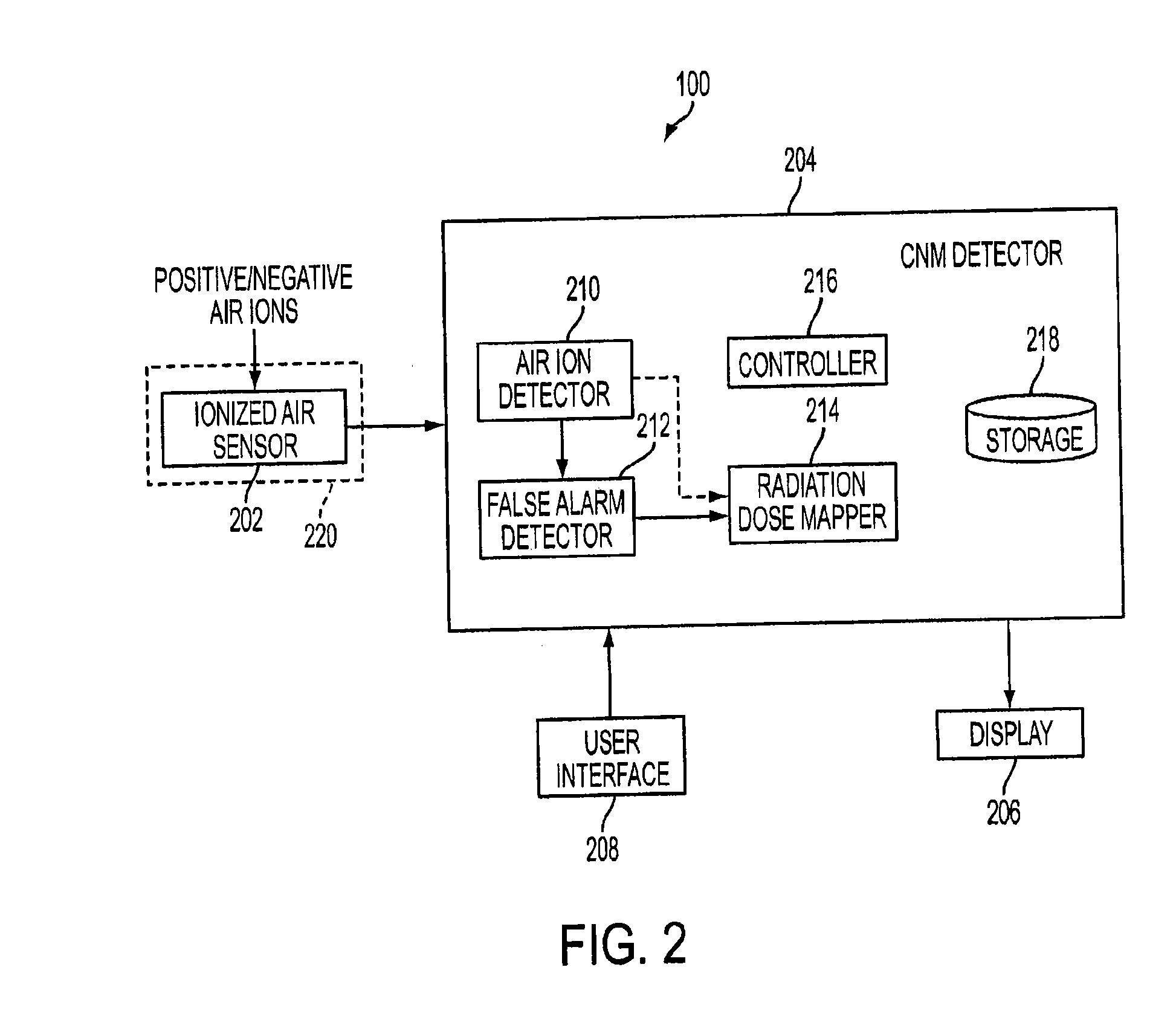Systems and methods for detecting concealed nuclear material
a nuclear material and concealed technology, applied in the nuclear field, can solve the problems of difficult detection, difficult direct detection of hidden nuclear materials, and difficult passive detection of -ray or neutron detectors,
- Summary
- Abstract
- Description
- Claims
- Application Information
AI Technical Summary
Benefits of technology
Problems solved by technology
Method used
Image
Examples
Embodiment Construction
[0017]As a general overview, and as will be described in detail below, the present invention is related to methods and systems for detecting concealed nuclear material (i.e., nuclear explosive devices, fissile material, radiological material, nuclear sites and nuclear activities) based on the detection of changes in the atmosphere surrounding the nuclear material. An exemplary concealed nuclear material (CNM) system detects ionized air and identifies characteristics of the ionized air indicating the presence of the concealed nuclear material. The present invention may be used for in situ and remote detection.
[0018]The present invention has broad applications for national security and defense. For example, in situ nuclear detection may be used at border checking posts, airports, seaports and many other locations. Remote nuclear detection may be particularly useful for defense purposes. For in situ nuclear detection, the present invention may be used to detect nuclear materials which ...
PUM
| Property | Measurement | Unit |
|---|---|---|
| thick | aaaaa | aaaaa |
| distance | aaaaa | aaaaa |
| air density | aaaaa | aaaaa |
Abstract
Description
Claims
Application Information
 Login to View More
Login to View More - R&D
- Intellectual Property
- Life Sciences
- Materials
- Tech Scout
- Unparalleled Data Quality
- Higher Quality Content
- 60% Fewer Hallucinations
Browse by: Latest US Patents, China's latest patents, Technical Efficacy Thesaurus, Application Domain, Technology Topic, Popular Technical Reports.
© 2025 PatSnap. All rights reserved.Legal|Privacy policy|Modern Slavery Act Transparency Statement|Sitemap|About US| Contact US: help@patsnap.com



